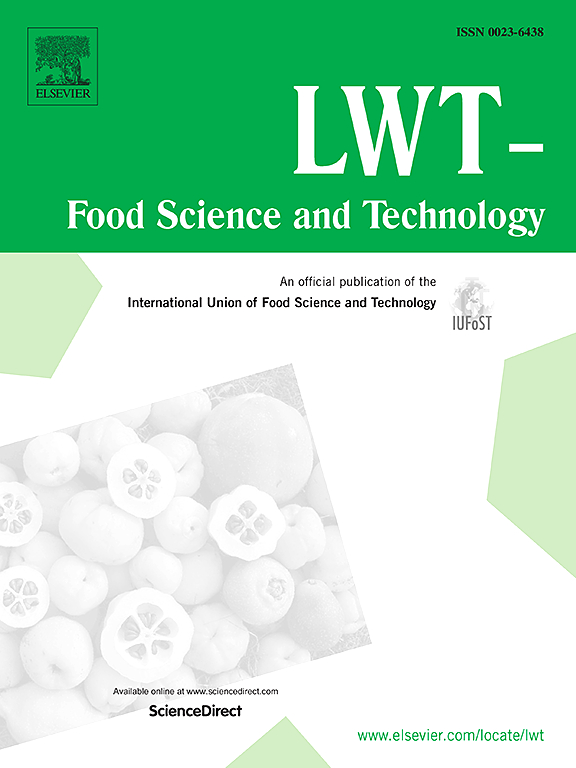Combined modified atmosphere package and melatonin treatments delay the senescence of bitter bamboo shoots by inhibiting the cell wall changes after harvest
IF 6
1区 农林科学
Q1 FOOD SCIENCE & TECHNOLOGY
引用次数: 0
Abstract
The tender bamboo shoots are prone to senescence with rapid increase of hardness after harvest. In this study, the combined treatments of modified atmosphere package and melatonin were applied to enhance the inhibition of cell wall metabolisms in delaying senescence of tender bitter bamboo shoots. This combined treatment could obviously suppress the increase of CO2 and decrease of O2 in packages, and the changes in level of firmness, total pectin, cellulose, and lignin of bitter bamboo shoots. The enzymes for cell wall polysaccharides such as polygalacturonase (PG), cellulase, and pectinase, and enzymes for lignin accumulation including phenylalanine ammonia lyase (PAL), cinnamyl alcohol dehydrogenase (CAD), peroxidase (POD), and laccase were apparently modified. Additionally, the biosynthesis genes of PaPAL3/4, PaCAD, Pa4CL, PaC4H, PaCCOAOMT, PaCOMT, PaSND2, and PaCESA1 in related to the lignin formation, as well as PaKNAT7, PaMYB20, PaMYB63 and PaMYB85 as the regulated transcription factors were obviously regulated. These findings indicate that the combined treatments could effectively mitigate the cell wall polysaccharide and lignin content, thereby extending shelf-life for bitter bamboo shoots after harvest.
求助全文
约1分钟内获得全文
求助全文
来源期刊

LWT - Food Science and Technology
工程技术-食品科技
CiteScore
11.80
自引率
6.70%
发文量
1724
审稿时长
65 days
期刊介绍:
LWT - Food Science and Technology is an international journal that publishes innovative papers in the fields of food chemistry, biochemistry, microbiology, technology and nutrition. The work described should be innovative either in the approach or in the methods used. The significance of the results either for the science community or for the food industry must also be specified. Contributions written in English are welcomed in the form of review articles, short reviews, research papers, and research notes. Papers featuring animal trials and cell cultures are outside the scope of the journal and will not be considered for publication.
 求助内容:
求助内容: 应助结果提醒方式:
应助结果提醒方式:


